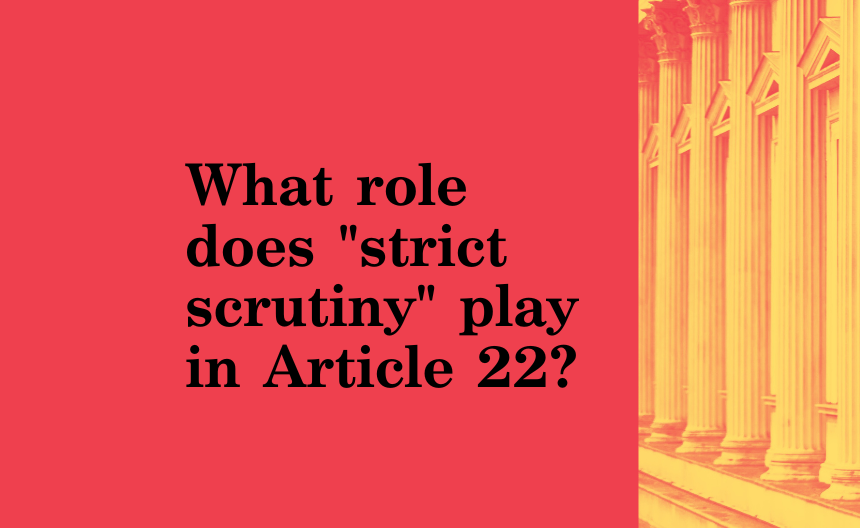We all deserve the freedom to determine our own life course – reproductive decisions included. This November, Vermont voters will have the opportunity to pass the Reproductive Liberty Amendment (Article 22) – an amendment that would explicitly enshrine reproductive liberty in our state constitution. If passed, Article 22 will ensure that abortion stays legal and that patients will continue to have access to all available treatment options, especially when serious complications arise.
The language of the amendment says:
“That an individual’s right to personal reproductive autonomy is central to the liberty and dignity to determine one’s own life course and shall not be denied or infringed unless justified by a compelling State interest achieved by the least restrictive means.”
After reading this language, a lot of people have understandably asked the question: What is “a compelling state interest achieved by the least restrictive means”? The short answer -- this is what is known in the legal world as “the strict scrutiny test” and it offers the strongest constitutional protection possible against efforts to restrict reproductive rights.
How does strict scrutiny work in theory?
One of the major functions of the Constitution is to protect people’s freedoms by setting limits on the power of the government. When a law is passed, people can challenge it in court to see if the law exceeds the government’s power as outlined in the federal or relevant state constitution. To decide if the statute is in line with the constitution, the court then applies different levels of “scrutiny” based on the language of the law and its impact on our rights.
There are three possible levels of scrutiny the court can apply. This ranges from the lowest – “rational basis” -- which only requires a law to have any conceivable relationship to a legitimate government interest and is applied when fundamental rights are not at play, to the highest -- “strict scrutiny” -- which applies when the government is attempting to restrict a fundamental right.
Under strict scrutiny, the government must show both that the interest served by the law is “compelling” or important enough that it justifies infringing on a fundamental right, and that any infringement on rights is done in “the least restrictive” or most careful way possible. This is the standard applied to the most serious cases where the government infringes on our core liberties, like voting rights or laws that explicitly discriminate based on race. It is extremely difficult for any law to overcome this standard, which means that protecting a right by requiring any law that restricts it to pass the “strict scrutiny” test is the absolute best way to limit the government’s ability to infringe on that right.
How will strict scrutiny work in practice under Article 22?
By ensuring that any future laws restricting our reproductive liberty would need to pass the strict scrutiny test, Article 22 (the Reproductive Liberty Amendment) offers our best chance at preserving the reproductive rights we rely on today. If a future Vermont legislature tried to pass a law that restricts our reproductive autonomy – like by limiting our access to abortion or birth control, making procedures like vasectomies illegal, or requiring certain people to undergo forced sterilization -- it would be nearly impossible for the Vermont Supreme Court to allow the law to go into effect.
Essentially, the legislature would have to establish that there was an extremely important reason to enact a law that restricts our reproductive rights and would have to prove that there was not any other possible way to address that state interest without infringing on our rights. Otherwise, the law will be struck down. When these two requirements are taken together, they offer the strongest protection possible for reproductive rights in Vermont.
We urge you to vote yes on Article 22, the Reproductive Liberty Amendment, to ensure that the rights we rely on today can be preserved for generations to come.

